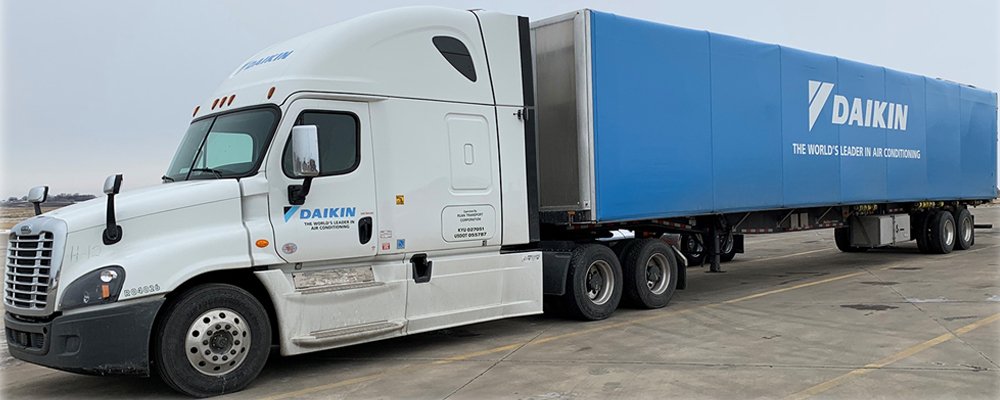Graduate Students Concoct Creative Solutions to Solve Real-World Business Problems
Every fall, students in the Analytics master’s program put their skills to the test in a real-world setting by completing an exciting capstone project. These projects are proposed by businesses and the results carry the potential to have both local and global ramifications. In small teams of two or three, students interact closely with their industry sponsor and a faculty advisor as they use data-driven methodologies to build actionable models and, at the end of the semester, communicate their results and recommendations.
What follows are two of the standout projects from the fall 2020 semester.

Discovering Outliers in Aerospace Manufacturing
At the Collins Aerospace manufacturing facility in Burnsville, assembly line workers construct thousands of parts used to assemble airplanes of all speeds and sizes.
“One of the challenges with our particular business is that we have so many different products,” says David Potasek, an engineer at Collins Aerospace. “We are an aerospace company, so every engine or plane we support will typically need a custom solution. We have to manage multiple assembly lines to accommodate all of our products.”
This low-volume, high-mix operational structure can lead to labor differences, such as more time spent producing a specific airplane sensor as compared to similar sensors on other planes. For their project, Potasek challenged students Tony Roberts, Luke Riveness, and Vijay Varadarajan with analyzing Collins Aerospace’s assembly line data and identifying variations, or outliers. Collins Aerospace could then take those standout parts or procedures and determine if a new assembly process or more training was needed.
Very quickly Potasek was impressed by the group’s ability to make sense of the data—despite never getting the chance to visit the company’s Burnsville site due to COVID-19 restrictions. “The students actually identified some metrics that I never would have thought about,” he says. “One of them was ‘missing labor entries,’ which are typically ignored. If you see greater clusters of the omissions of data associated with different product lines or people, that’s also a clue that there could be a potential issue there.
“This is real-world data; it’s not perfect. And they embraced the imperfections of that and turned it on its head. I was most impressed with that: turning that negative into a positive.”
The group presented their findings, along with a prototype to identify future outliers, to managers and product line groups at Collins Aerospace. “Some very high-level people were at those presentations and they did an excellent job,” says Potasek. “It’s a challenge to identify where to put your resources when you work in this sort of environment. But the students gave us more insight into our operations.”

Designing Efficient Shipping Strategies
Daikin Applied, a global leader in commercial and industrial air conditioning systems, is facing an issue that is affecting many other retailers in the United States: the expansion of online sales has given rise to a broad and geographically dispersed base of customers.
“The parcel and [Less than Truck Load, or LTL] freight space used to be largely commercial,” says Ed Blackford, vice president of parts and logistics at Daikin Applied. “In the last several years, however, the volume of goods shipped directly to homes via parcel and LTL is up 300 percent because of online purchases. Carriers are taking the freight despite staffing challenges, and a lack of trucks and trailer capacity. Plus, there’s been more damage in transit, lost orders and the like.” Daikin is facing questions about how to adjust its shipping strategies in response to this new industry landscape.
Like many other commercial enterprises, Daikin is now serving a spectrum of customers—from building contractors to household owners. One customer may buy several hundreds of Daikin’s HVAC parts and products, while another customer may buy only one. “We’re shifting our freight modes away from LTL to [Truckload, or TL] to help avoid rising costs, network delays and handling concerns,” says Blackford, “but there is a law of diminishing returns here. At some point, shipping a single pallet in one truck puts us at a financial disadvantage. We need to ship full truckloads or nearly full.”
Blackford and his colleagues at Daikin turned to students Aparajita Kar, Seungyoon Lee, and Weiqi Wang to find a solution to this shipping dilemma. Specifically, Daikin was interested in creating a new system that would minimize costs and the chance of damaged shipments by packing trucks as full as possible with the fewest number of stops possible.
The group received Daikin’s forecasted production schedule and used it to build an algorithm that determines shipping patterns for orders headed to the same geographical location. “These students created an algorithm that did a better job than what we had been doing manually,” says Blackford. “What the students did such a nice job of was understanding our requirements. Taking into account zip codes, weights, length, width, height, and then cubing out the truckload. This in turn would allow us to tender the load of goods to customers.”
Kar, Lee, and Wang also developed a dashboard to show possible consolidations of shipping orders that Daikin could use in the future. “They built a whole tool where you could play around with forecast numbers for the next week,” says Blackford. “The students used regression analysis and optimization to find the best routes, and clustering to identify which products should go on what trucks. Those are the things they learned in the [Analytics M.S.] program and they applied it here beautifully. They really hit it out of the park.”